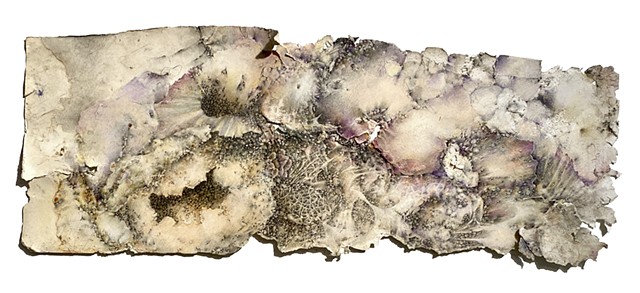COVID-19
Plenty of artists take the environment as their subject, but few can claim it as a collaborator. During the pandemic, Judith Roston Freilich became one of them by deciding to leave her drawing paper outdoors. After allowing the sheets to weather for a month, Roston Freilich brought them back into the studio and got to work, finding and enhancing resemblances to natural occurrences like fungi, mold, acidic springs, even viruses. In “Storm, May 24, 2020,” certain patches sprout finely inked speckles, like spores; others glow rosy like the tender inside of a flower; elsewhere crumbles the dark remains of a burn. It can be hard to tell what has been added by the artist and what by nature, a symbiosis that feels meaningful. Likewise the confusion between representations of the human and the environmental: is that bruised skin or a moody sky, muscle tendons or bleached coral in “Hidden in Storms II”? The more we recognize the relationship between these categories, the better. (Featured in Flux: Vita Mutata and in Studio Stories 2020.)
—Lori Waxman 2021-03-01 2:16 PM
